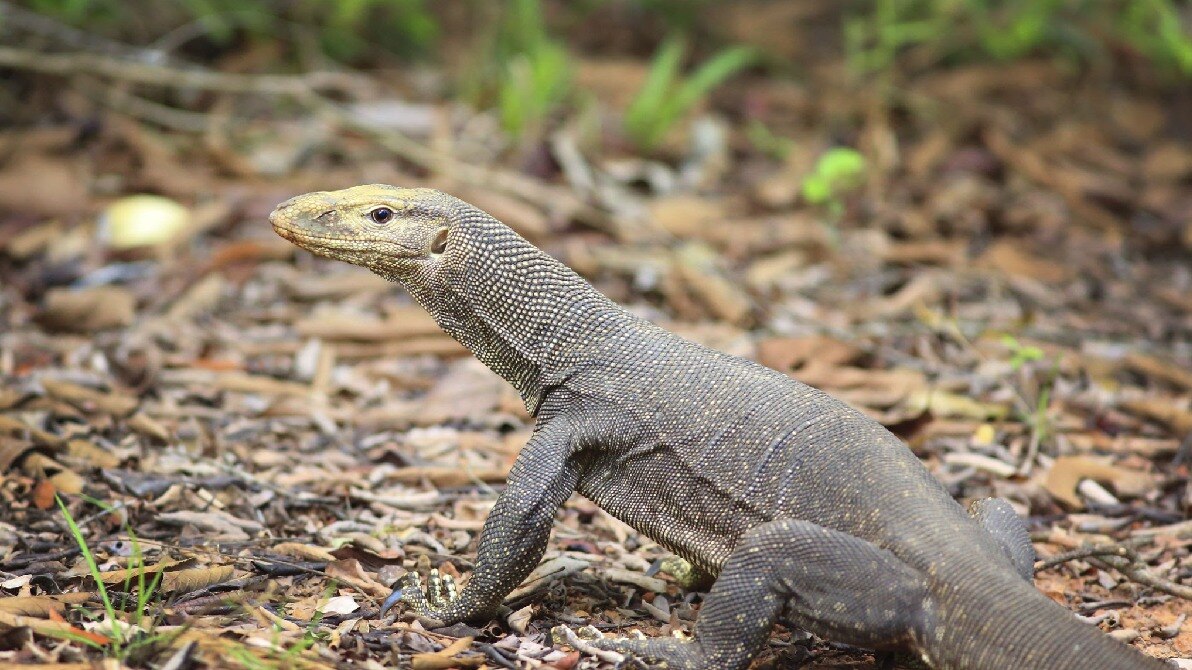About Monitor Lizards
- They are a group of large reptiles belonging to the family Varanidae.
- They are known for their distinctive appearance, with long bodies, powerful limbs, and well-developed tails.
- They are considered to be the most intelligent of all lizards and some of the most intelligent reptiles in general.
- Distribution:
- They are mainly native to Asia, Africa, and Australia.
- India is home to four Monitor lizards – the Bengal Monitor (Varanus bengalensis), the Asian Water monitor (Varanus salvator), the Yellow monitor (Varanus flavescens) and the Desert monitor (Varanus griseus).
- Features:
- They have large claws, powerful tails, long necks, and well-developed legs.
- They can move quickly and powerfully in pursuit of prey.
- Most monitor lizards are terrestrial and largely carnivorous.
- They do not blink and they have very good vision.
- They have forked tongues which they use for smelling.
- Conservation Status:
- Wildlife Protection Act, 1972: Schedule 1
Key Facts about Komodo dragon:
- It is a type of monitor lizard.
- Scientific Name: Varanus komodoensis.
- It is the largest species of monitor lizard, and it can grow up to ten feet long and weigh 300 pounds.
- They are also generally known to be the most dangerous types of monitor lizards
- The skin of a Komodo dragon is also unusual compared to other monitors. It has tiny bones called osteoderms throughout its skin, which reinforces its toughness against predators.
Q1) What are Osteoderms?
Osteoderms are bony deposits embedded in the skin of certain animals, primarily reptiles. These structures provide protection and structural support to the body, often serving as armor against predators or environmental hazards. Osteoderms are typically found in the dermal layer of the skin and can vary in size, shape, and arrangement depending on the species.
Source: Monitor lizard rescued from residential areas in Thane, released in the wild
Last updated on June, 2025
→ UPSC Notification 2025 was released on 22nd January 2025.
→ UPSC Prelims Result 2025 is out now for the CSE held on 25 May 2025.
→ UPSC Prelims Question Paper 2025 and Unofficial Prelims Answer Key 2025 are available now.
→ UPSC Calendar 2026 is released on 15th May, 2025.
→ The UPSC Vacancy 2025 were released 1129, out of which 979 were for UPSC CSE and remaining 150 are for UPSC IFoS.
→ UPSC Mains 2025 will be conducted on 22nd August 2025.
→ UPSC Prelims 2026 will be conducted on 24th May, 2026 & UPSC Mains 2026 will be conducted on 21st August 2026.
→ The UPSC Selection Process is of 3 stages-Prelims, Mains and Interview.
→ UPSC Result 2024 is released with latest UPSC Marksheet 2024. Check Now!
→ UPSC Toppers List 2024 is released now. Shakti Dubey is UPSC AIR 1 2024 Topper.
→ Also check Best IAS Coaching in Delhi
























